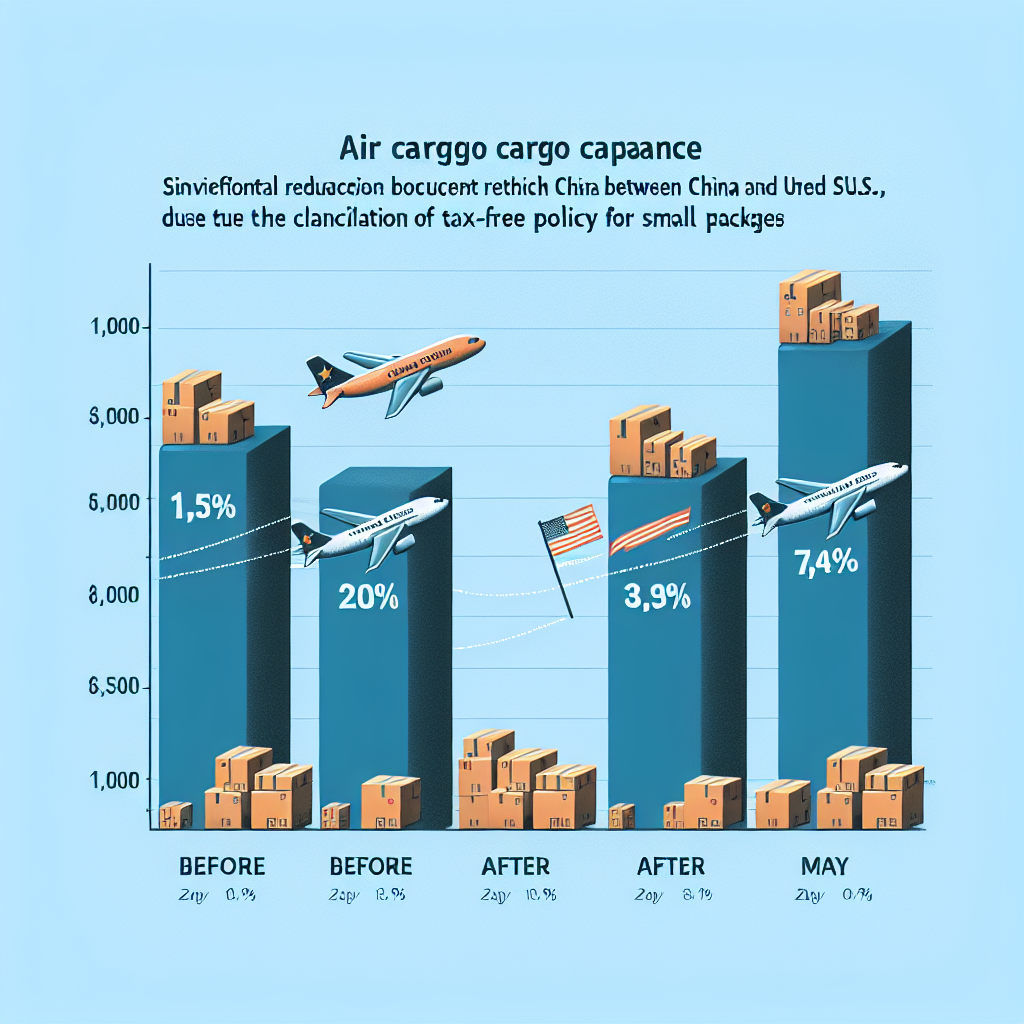Cancellation of Tax-Free Policy for Small Packages in the United States has led to a significant reduction in air cargo capacity between China and the U.S. Within just a week of the policy being revoked, the number of cargo flights operating between the two countries has been drastically cut. On May 1st, 2nd, and 8th, there was only one cargo flight to the U.S. each day. Additionally, most of the cargo flights from China to the U.S. in May have been canceled, resulting in very limited capacity.
According to data provided by TechAviation to Caixin, the air cargo capacity between China and the U.S. has decreased by approximately half during the week of May 1st to 7th. On May 1st, there were 46 round-trip cargo flights between the two countries, while on May 2nd and 7th, the numbers dropped to 32 and 28 flights respectively. In the previous month of April, there were an average of 65.83 round-trip cargo flights between China and the U.S. per day.
Reports from Caixin indicate that on May 9th, a representative from a Zhejiang airport group revealed that only one cargo flight each on May 1st, 2nd, and 8th flew to the U.S. during recent days. The cargo flights to the U.S. have essentially ceased operation, with air freight rates dropping to around 20 RMB/kg.
Another air freight agent servicing the U.S. routes mentioned that most of the scheduled cargo flights for May have been canceled, leading to a significant reduction in capacity. However, there is still a small amount of cross-border e-commerce goods being transported, with flights operating at near full capacity.
The air cargo market between China and Japan and China and South Korea has also been affected. Previously, Japan and South Korea served as transit hubs for some of the air cargo demand between China and the U.S. TechAviation data shows that the average daily round-trip cargo flights between China and Japan were 39.43 from May 1st to 7th, down from 65.43 in April. Similarly, the average daily round-trip cargo flights between China and South Korea were 36.57 from May 1st to 7th, compared to 59.23 in April.
The air cargo market between China and the U.S. had already begun to shrink earlier. According to TAC Index data for the week ending on April 27th, the tonnage from China and Hong Kong to the U.S. had decreased by 15% compared to the same period last year. During the same week, the spot air freight rates in the Asia-Pacific region further dropped by 2% to $3.67 per kg.
In recent years, the Chinese air cargo market had experienced significant growth due to the surge in cross-border e-commerce. Prior to the implementation of tariffs, e-commerce goods were estimated to account for at least 60% to 70% of air cargo volume. Cirrus Global Advisors, a consulting firm specializing in e-commerce and logistics, predicts that with the 145% tariff in place, parcel volumes will decrease by approximately 90%.
TechAviation analyst Luo Chengtao also believes that the adjustment in the tax-free policy for small packages and the shift in cross-border e-commerce models will have a huge impact on the cargo business of domestic airlines, particularly those with a higher proportion of e-commerce shipments on the China-U.S. routes. In the short term, these airlines may face a double decline in cargo volume and freight rates on these routes, directly impacting their revenue and profitability levels.
On April 2nd, the U.S. announced a 54% “tit-for-tat tariff” on China; increased to 104% on April 8th; and escalated to 125% a day later. By April 10th, the White House announced that the cumulative tariff on China had reached 145%. Concurrently, U.S. President Trump announced on May 2nd the termination of tax-free treatment for parcels under $800 imported from mainland China and Hong Kong, requiring all goods to be officially declared for import and subject to tariffs. Within a week, the tax rates on cross-border small packages jumped from 0% to 30%, 90%, and 120%.

